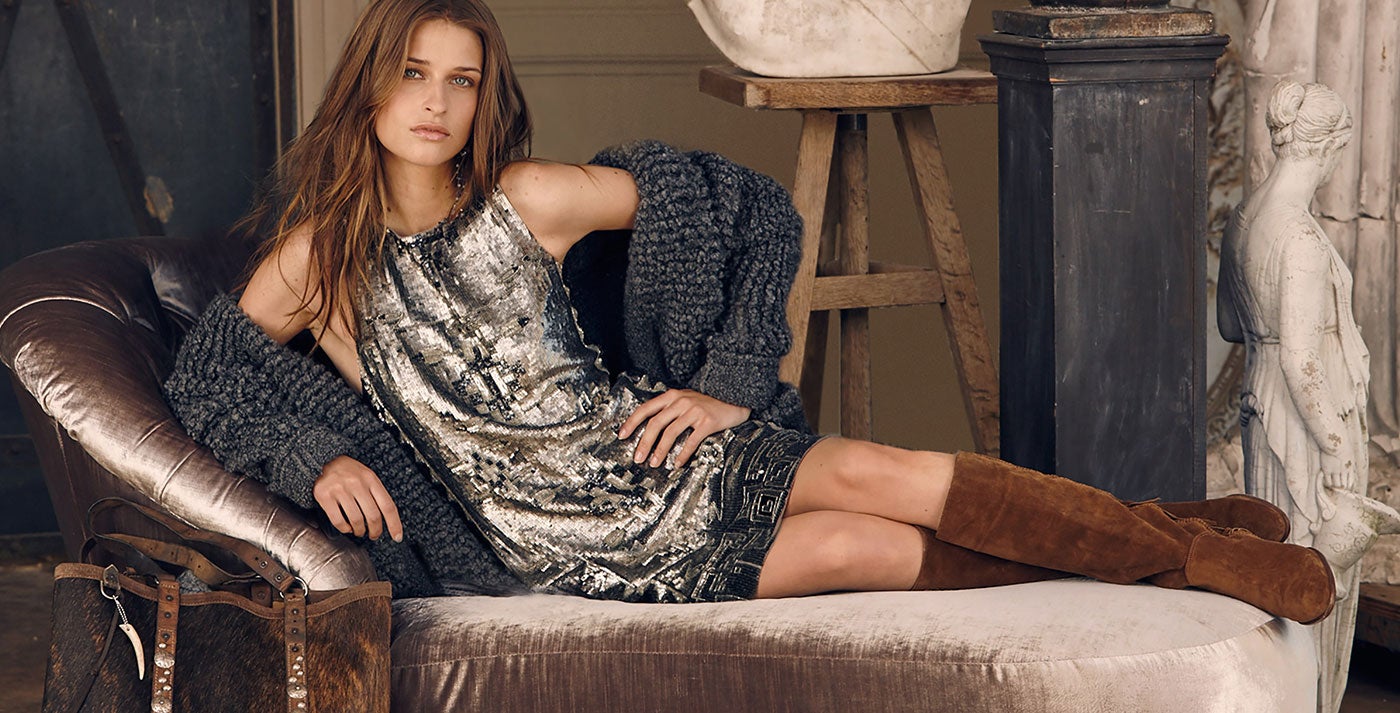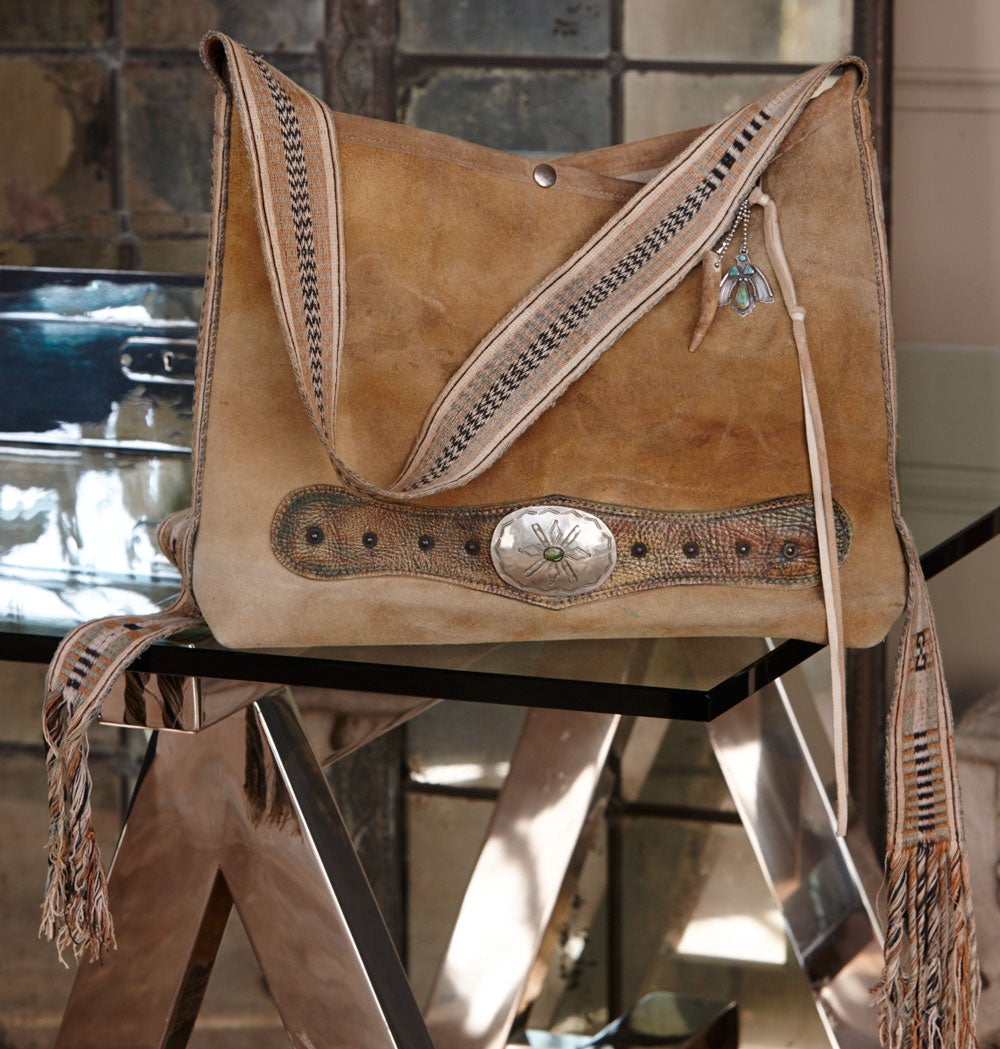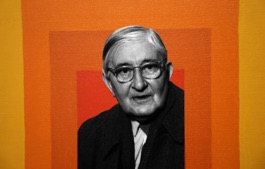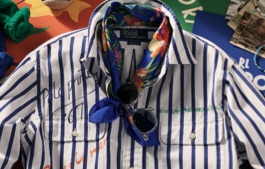
When asked to describe the philosophy behind her eponymous bag and accessories brand, Judy Augur explains that it’s all in the remix. “It’s about pulling what already exists—found, vintage, antique materials—and seeing how they correspond with each other in terms of color, texture, and feel,” she says. The pieces, which have made regular appearances in Ralph Lauren stores since 2006, are a study in unexpected juxtaposition. Augur puts it more concretely: “It’s about not being afraid to combine a 19th-century Eastern European sash with leather and a Navajo sterling silver concho.”
For this year’s fall women’s Polo collection, Augur was given a wide space to play within. “I had some general guidelines in terms of color palette and theme, and I ran with that,” Augur says. One tote was made from cowhide that was lying on the floor of Augur’s office when she got news of the project. “It was really old and just seemed to be the right color and feel, so we pulled it off the floor and cut it up,” she says. For the large concho bucket bag, the team suggested she incorporate a unique strap with a folksy, hippie feel. To hit the right mood, she reached for a collection of antique, hand-woven Bulgarian sashes and belts that had been waiting in her arsenal. “Before I started working on my bags, I had the privilege of being a supplier to the Ralph Lauren vintage department,” she says. “The designers used to buy from me, so I was really familiar with the aesthetic.”
For this year’s fall women’s Polo collection, Augur was given a wide space to play within. “I had some general guidelines in terms of color palette and theme, and I ran with that,” Augur says. One tote was made from cowhide that was lying on the floor of Augur’s office when she got news of the project. “It was really old and just seemed to be the right color and feel, so we pulled it off the floor and cut it up,” she says. For the large concho bucket bag, the team suggested she incorporate a unique strap with a folksy, hippie feel. To hit the right mood, she reached for a collection of antique, hand-woven Bulgarian sashes and belts that had been waiting in her arsenal. “Before I started working on my bags, I had the privilege of being a supplier to the Ralph Lauren vintage department,” she says. “The designers used to buy from me, so I was really familiar with the aesthetic.”
That uncanny knack for finding just the right look has made Augur a major player in her field, and a go-to when Ralph Lauren needs something with a patina that can’t be fabricated. “What we do may not look like it’s very difficult, but it requires a lot of steps and effort to get it to be functional,” she says. “We strive to build structural integrity into all of our pieces, with the idea that the finished product is somewhat of an instant heirloom.”
Augur launched J. Augur Design out of her Claremont, California, studio in 2000. At the time, she was working as a vintage dealer and started modifying old bags as a hobby. The first was a drab green military surplus shoulder satchel, which she covered with paint and scraps of vintage material.
“I imagine it was pretty ugly,” Augur says with a laugh. As the carryalls piled up on the back of her studio door, her clients began to take notice and buy favorite one-off pieces. Pretty soon they were putting in for bigger orders, and by 2004, Augur gave up dealing in vintage to focus full-time on her craft.
Augur launched J. Augur Design out of her Claremont, California, studio in 2000. At the time, she was working as a vintage dealer and started modifying old bags as a hobby. The first was a drab green military surplus shoulder satchel, which she covered with paint and scraps of vintage material.
“I imagine it was pretty ugly,” Augur says with a laugh. As the carryalls piled up on the back of her studio door, her clients began to take notice and buy favorite one-off pieces. Pretty soon they were putting in for bigger orders, and by 2004, Augur gave up dealing in vintage to focus full-time on her craft.

More than 10 years later, the California native runs her studio (with help from three employees) out of a 2,000-square-foot industrial warehouse brimming with rare finds, from cowboy gear to Navajo jewelry. Each bag is made by hand and takes about 20 hours to assemble, not counting the extensive, meticulous prep work: disassembling leather chaps, cleaning the hides, repairing stitching and seams. For her materials, which come predominantly from the Southwest, Augur relies on dealers who scour private collections and estate sales, then ply their wares at her favorite California flea markets, like Pasadena’s Rose Bowl. When she has time to travel, she does this work herself, combing through vintage shows for the unique artifacts that make her heritage creations possible.

Judy Augur with some tools of her trade (and one canine assistant)
Augur’s love of old-school Americana goes back to a childhood spent exploring the Southwest. Though she grew up in Southern California, her father was born in Colorado and her mother in Wyoming. “Every summer we’d drive through Arizona, New Mexico, Utah, and Wyoming to visit family or go to Jackson,” she says. At age 4, she was already in cowboy boots, and growing up she fantasized about the summers when she could escape California to ride horses and explore the rich cultural landscape that so completely captured her imagination (fueled by pop culture favorites like Roy Rogers and the Lone Ranger). Teenage years spent picking through thrift stores for punk T-shirts to cut up and customize helped inspire her love of crafting.
Another big source of inspiration? “Mr. Lauren, actually, and the Western Americana aesthetic that has been such a big part of his work for all of these decades,” she says. “He continues to be a big influence on me. It’s become a symbiotic relationship, reinforcing my own love for this type of stuff.”
And when two visions align perfectly, bags like these are the result. Painstakingly assembled with materials of far-flung provenance, each is a one-of-a-kind piece worth holding on to.
Another big source of inspiration? “Mr. Lauren, actually, and the Western Americana aesthetic that has been such a big part of his work for all of these decades,” she says. “He continues to be a big influence on me. It’s become a symbiotic relationship, reinforcing my own love for this type of stuff.”
And when two visions align perfectly, bags like these are the result. Painstakingly assembled with materials of far-flung provenance, each is a one-of-a-kind piece worth holding on to.
is a writer and editor based in New York City. Her writing has appeared in Vogue, Condé Nast Traveler, and Architectural Digest, among other publications.
- Courtesy of Ralph Lauren Corporation
- Courtesy of Judy Augur







